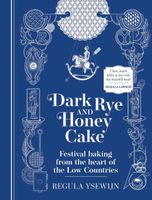Advertisement
Printing the Dough
Published 2023

People have always striven to create attractive shapes in food, be it with gelatine to make shaped jellies, by freezing cream to create moulded ice cream or, the oldest method, moulding dough in a carved piece of clay or wood. In the 13th-century Baghdad Cookery book Kitāb Al-tabīkh is a recipe for ‘samak wa-aqras’, a confection of honey boiled with sugar, ground almonds and starch flavoured with rosewater and musk. It is then pressed in wooden carved moulds shaped like fish.
They are called koekplank, speculaasplank or koekprent (after ‘printing’) in Dutch natiolects; Mézeskalács ütőfák in Hungarian; Lebkuchenform or Springerleform in German; gingerbread mould in English: in fact, many northern and eastern European cultures, and Russia, have a history of shaping dough into a carved wooden board. Yet it was in the Low Countries, and especially the Netherlands, that they were the most plentiful, as we can judge by the surviving old wooden moulds and the fact that their use is still common today.

